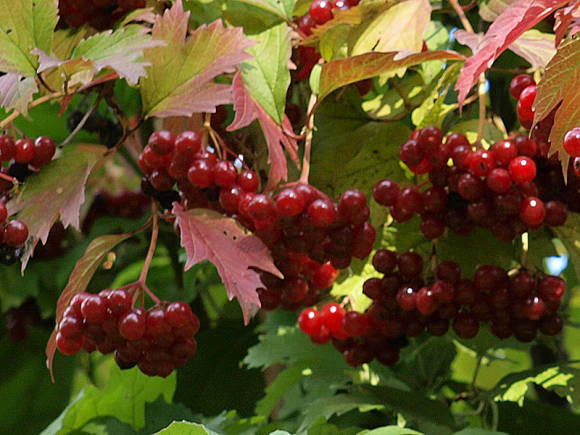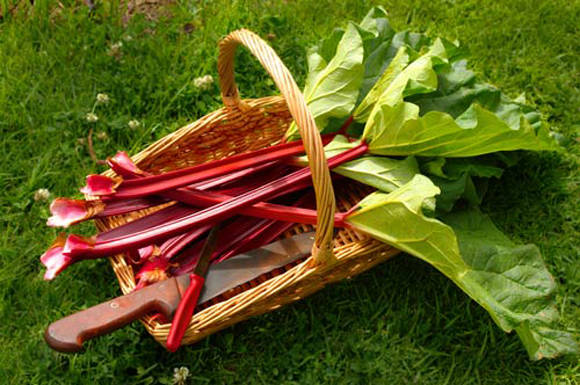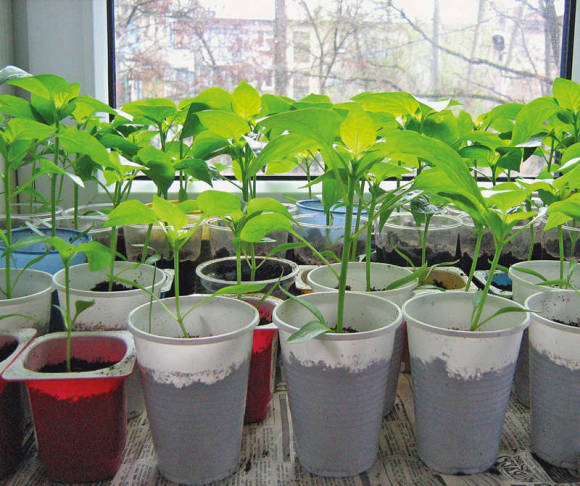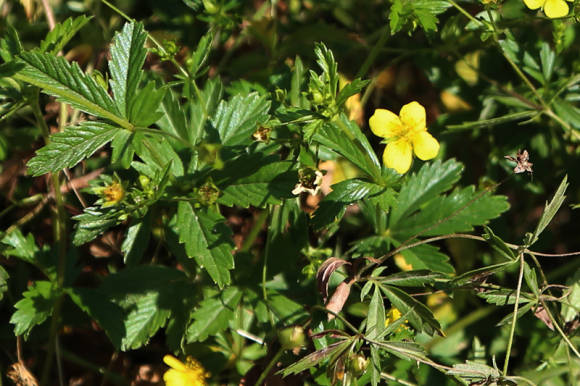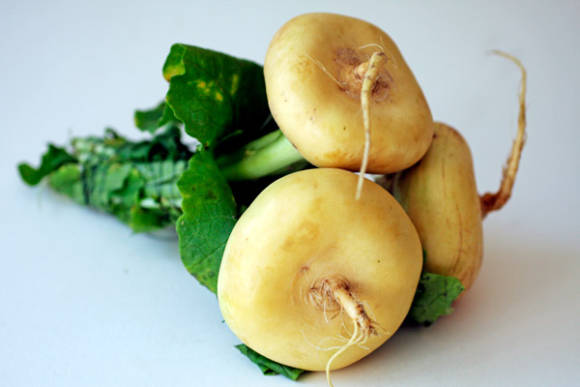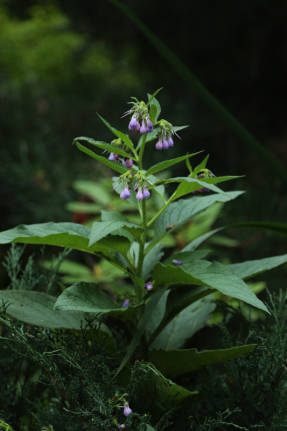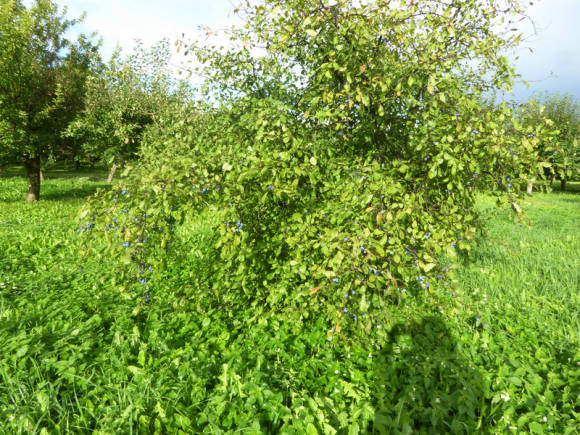This plant is found very widely in the southern regions under the names of flea beetles, butterlak, chicken leg, sucker. Once in the garden, it appears with enviable persistence in subsequent years. The Latin name for purslane means a distorted Latin pullipied - "chicken leg". And the specific name oleracea indicates that its place is in the garden (remember the Latin name for cabbage).

Garden purslane (PortulacaoleraceaL.) - an annual herb from the purslane family (Portulacaceae) with highly branched, outstretched fleshy, red-brown stems up to 40 cm long. Its leaves are very fleshy, the lower ones are opposite, the upper ones are rosette, oblong-wedge-shaped with a blunt tip. The flowers are rather inconspicuous, bisexual, solitary or arranged in bunches in the branches of the stems and in the leaf axils. The petals are yellow. The fruit is a polyspermous, spherical capsule 5-8 mm long.
Blooms in June - August. The fruits ripen in September - October. The whole plant has a well-pronounced sour taste.
In the wild, it is distributed in the south of the European part of Russia, mainly in the black earth zone, in the Caucasus and Central Asia, in the south of the Far East. Most often found on roads, near dwellings, along river banks, in fields. It grows well on sandy-pebble deposits along the banks of reservoirs. This is the so-called Old World plant. But he successfully naturalized on other continents as well.
Purslane grows quite successfully in the Non-Black Earth Zone, for example, in the Moscow region. And even self-reproducing next year by self-seeding.
What to treat?

The aboveground part of purslane contains carbohydrates (glucose, galactose, fructose, sucrose, maltose, raffinose), carotenoids (lutein, β-carotene), higher fatty acids (primarily α-linolenic), organic acids (mainly oxalic), flavonoids ( liquiditin), betacyanins, phenolcarboxylic acids, steroids (sitosterol, campesterol, stigmasterol), terpenoids (glutathione, β-amyrin, butyrospermol, parkol, 24-methylene, 24-dihydroparqueol), alkaloids, saponins, nitrogen-containing compounds C (up to 300 mg%), α-tocopherol (E), PP and K, mucous and resinous substances (up to 2.4%). The seeds contain fatty acids (oleic, linoleic, palmitic).
As a medicinal plant, purslane has been known since the times of Hippocrates and Galen. In ancient times, it was believed that its seeds cleanse the body. Its healing properties were known back in the 11th century. Odo of Mena described the following indications for the use of the herb:
“If you apply grated (grass), it helps the swollen eyes;
Eat in the summer, and you won't get any harm from the intense heat;
With salt, the herb and wine for softening serves the stomach;
The pain in the bladder, if eaten, usually relieves.
In Arab medicine, purslane was used for removing warts, for erysipelas, for acne on the head (they washed it with grass mixed with wine).
In traditional medicine, it is recommended to use purslane for diseases (inflammation) of the liver. It prevents vomiting of bile.
There is information about the use of this plant for impotence, gonorrhea, tumors, as an antiscorbutic and antihelminthic agent.
Currently, fresh grass and seeds are used as medicinal raw materials.
Purslane herb contains a hormone-like substance - norepinephrine, in its structure and action similar to the hormone synthesized by the human adrenal cortex. Norepinephrine stimulates the central nervous system and improves tone, as well as increases energy expenditure in the body. This is a kind of doping that spurs the body. Therefore, with depletion and increased excitability of the nervous system, purslane as a drug and a constant component of the diet is undesirable.
Another contraindication for purslane is pregnancy.This plant increases the tone of the uterus, which can lead to sad consequences.
Purslane leaves were used in Russia as a wound healing and antitoxic agent for the bites of poisonous snakes and insects, for Trichomonas colpitis, liver and kidney diseases, as a diuretic, for vitamin deficiencies, dysentery; the seeds were used for scaly lichen.
Outwardly, in the form of rinsing, the infusion of the whole plant is effective for gum disease.
Purslane seeds were used as an antipyretic agent, for which they were imported to Central Asia from Iran before the revolution. For the same purpose, seeds were used in the Caucasus. As a “medicated dressing” or as a drink, this herb helps with stomach inflammation. In Central Asia, the herb is used for bloody diarrhea and intestinal ulcers.
Dr. F. Leclercq, luminary of French herbal medicine, believed that, due to the content of mucus, purslane has an anti-inflammatory and healing effect in inflammation of the gastrointestinal tract and skin diseases. In addition, he pointed to a mild laxative effect of this plant and recommended it to prevent constipation.
In medicine in many countries of the world, purslane was used as a diuretic and anti-inflammatory agent for diseases of the urinary tract (primarily cystitis and urethritis). For example, in Korea, a decoction of purslane with licorice roots is used. To prepare it, you need to take 20 g of fresh purslane leaves and 3 g of ground licorice root, pour 2 cups of boiling water and heat for 30 minutes over low heat. Strain and take the specified amount of broth in two steps during the day.
In many countries, purslane is used as an antiparasitic agent (for ascariasis, hookworm infections and non-catarlosis). This use is justified from the point of view of the mechanism of action of the substances it contains. Purslane causes smooth muscle contraction, which has a detrimental effect on parasites. A similar principle of action is for such well-known antiparasitic agents as tansy and wormwood.
French herbal medicine offers the following recipe: 10 g of seeds are boiled in ½ liter of milk and taken in the morning on an empty stomach with the above helminthiasis.
It is recommended to use purslane herb in the diet of people with mild diabetes mellitus. A tablespoon of fresh grass is poured with a glass of boiling water, insisted for 2 hours, filtered and used 1-2 tablespoons 3-4 times a day.
The plant contains up to 95% water, so it is rather difficult to preserve or dry it. But in the form of juice mixed for conservation with vodka in a 1: 1 ratio in a dark place, purslane will retain almost all of its medicinal properties, except for vitamin C.
What's on the plate?

Although purslane and vegetable culture, French gourmets did not send everything to a plate. This honor had to be earned with larger leaves, special taste or color. For the first time cultural forms are mentioned in 1536 in J. De La Ruelle's book “Denatura Stirpium”. Young leaves and stems have been used for food in raw and boiled form for a long time. Spicy salads, soups, seasonings for meat dishes are prepared from them. Salted for the winter and pickled.
By the way, in France there are many varieties with yellow and even reddish color of the leaves, which gives additional elegance to dishes made from it. For example, you can cook purslane saladseasoning the purslane leaves with yogurt mixed with olive oil, chopped garlic and ground black pepper. In Italy and all the same France, the leaves are pickled in grape vinegar, and also added to mashed soups to give them a thicker consistency.
See Purslane salad, pickled purslane.
For a long time, purslane greens have been especially popular among the population of the Transcaucasian states.
But he came to America in the 17th century and the attitude towards him was rather disdainful, like a weed that can be eaten only in very hungry times.And so far, little has changed.
Purslane in a seedbed

Despite the fact that this wonderful vegetable crop is distributed mainly in the southern regions and countries, it is possible to grow it even in our zone of risky farming with practically no hassle. For starters, the main thing is to get the seeds.
The garden bed is dug up, freed from weeds, organic fertilizers are applied, leveled and sowed.
Grooves are made in the soil at a distance of 35-45 cm, they are spilled with water and seeds are sown. It is better not to sprinkle the seeds with earth, but cover them with agril or lutrasil to protect the soil surface from drying out. When shoots appear, the shelter is removed.
Care consists mainly in weeding, and in case of special droughts - watering.
The crop is harvested throughout the second half of the summer as the shoots grow and are used both for food and for treatment.
But the seed boxes ripen very unevenly, and even crack. Therefore, as they are formed, they are harvested slightly immature, laid out on paper. When dried, the seeds in the boxes ripen, and the boxes crack. The resulting seeds can be sown next year. It is better not to store them for a long time, they lose germination relatively quickly.
But most likely, unless of course you are a supporter of a sterile order in the beds, the purslane will appear on the site next year from crumbling seeds. The main thing is not to weed out all the plants at once, but to wait until they grow up and use them if necessary. Moreover, the purslane behaves quite delicately and tries not to occupy the beds, but to slide between them.

